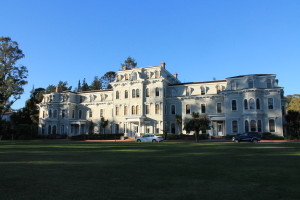
Due to low enrollment, ASMC has been lacking money for their special funding for clubs and organizations.
In a year full of upheavals and campus changes, one of the most jarring for students was the unexpected decrease in ASMC funding in the Spring semester. The lack of funding has been a hot topic of conversation among Mills students since the announcement was made in January, and though ASMC’s outlook for the future is optimistic, questions still linger as to how Mills students will be affected by the budget crunch next year.
Near the end of Fall 2015, ASMC Finance Chair Sarah Dreher realized that the ASMC budget for the semester exceeded the money that they had saved from student fees. By Thanksgiving break, ASMC had already designated nearly 90% of their annual budget, leaving no cushion for special funding or new events.
The effects of these budgetary problems have rippled into nearly every aspect of Mills student life, from the elimination of all club funding to massive budget cuts for campus organizations, like The Campanil, the Mills Choir and The Walrus. All throughout the Spring semester, ASMC leaders have been working to solve their budget problems and to ensure that students are not left without funding in the future, but the effect of this year’s budget crisis on current Mills students remains uncertain.
Student fees are expected to remain at $150 per student next year, but it is not yet clear how much funding students will be able to expect from ASMC during the 2016-2017 school year. In the past, each club has been given a stipend of $100 per semester, but ASMC is reevaluating that number for the coming years.
“[ASMC is] hoping to give some funds to the clubs and organizations that attend their required meetings, but the amount is dependent on how many clubs and organizations are in existence,” ASMC Advisor Remi Harada said. “The one thing that club and organizations leaders will have to know is that groups will have to have some fundraisers to hold some of the larger events.”
Exactly how the budgetary discrepancies that threw ASMC into such a financial crisis this semester came to pass is uncertain, but Dreher reported that a high turnover rate in the finance chair position the previous year may have resulted in the miscommunication and loss of budget documentation and transition materials. Information about the budget and planned spending, she said, was not readily available to her throughout the beginning of her tenure in the Fall semester.
“The only time I would figure out [information about the budget] was out of my own curiosity about ‘How much money do we actually have?’ and ‘Where is this coming from?’,” Dreher said. “And there was still a lot of discrepancies in the minutes. It was like constantly trying to figure out a code or a puzzle.”
In future years, ASMC plans to scale back its involvement in the funding of campus clubs and activities, encouraging students to fundraise on their own and garner departmental sponsorships for events, with ASMC making smaller contributions on a case-by-case basis. Though their budget should be much more accommodating next year than it was this spring, ASMC plans to be much more conservative in their estimates of incoming students and, by extension, the amount of money they will be receiving from student fees.
“ASMC will not allow this to happen again because they know through the experience this year that ASMC funds is not filled with a pot of gold,” Harada said.
Though the loss of ASMC funding rattled campus groups across Mills, including ASMC themselves, ASMC is reportedly on track to implementing a more sustainable budget model for the future, and does not expect to have to make such drastic cuts next year as they did this semester.
“I think this year was that ASMC took it into their own hands to fix all of the problems,” Harada said. “[The future] will be tough, but I think it won’t be as tough as this year.”





